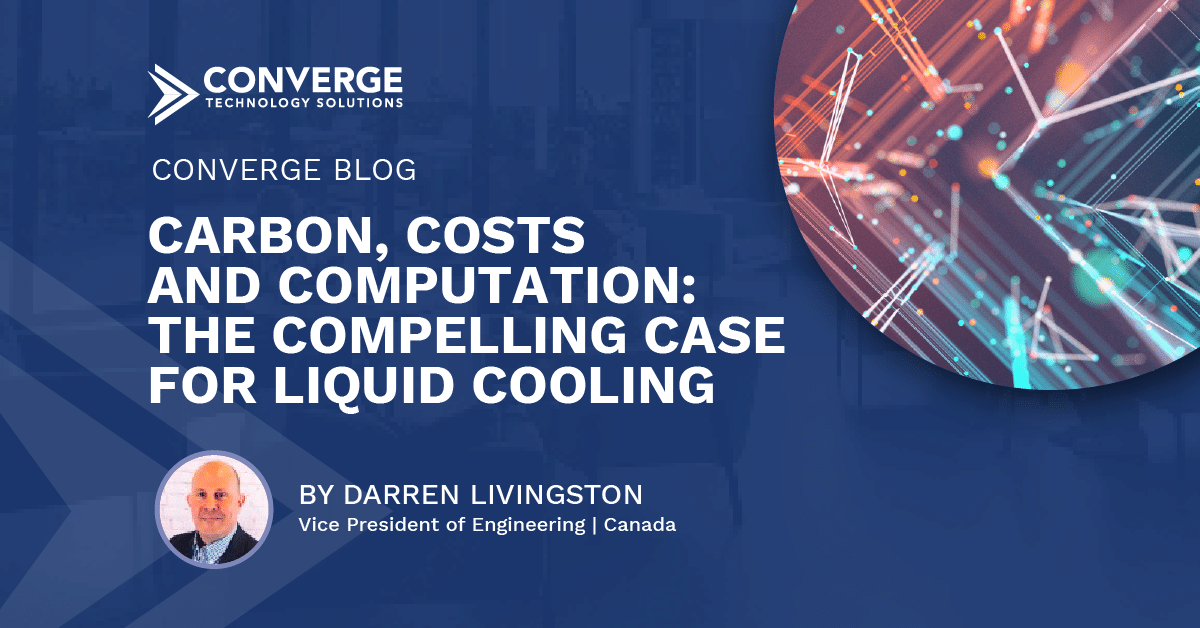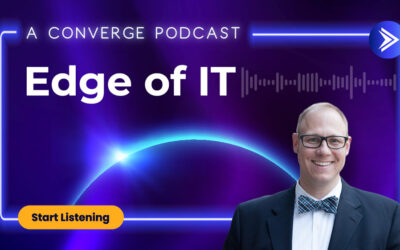Today’s data- and processing-intensive applications continually need more processing power, and more processing power means more computing, more servers, higher density in data centers, and, ultimately, more energy usage. Computers create heat and lots of it. Mitigating heat takes a lot of cooling and traditional air cooling in data centers is energy intensive and not always effective. Smartly mitigating heat in data centers is a problem begging to be solved.
This energy consumption hits the organization in many ways. One of the biggest concerns is sustainability. Most, if not all, organizations have committed to serious environmental, social and governance (ESG) missions with publicly promoted goals of reducing energy consumption and limiting CO2 emissions. This dictate may come from the board or the CEO or may even have dedicated leadership (think Chief Sustainability Officer), but the mission falls on everyone’s shoulders, including the data center manager and application users. Reducing energy consumption in computing cooling is a big ESG win.
The health of the planet aside, traditional cooling is expensive. Cooling costs can account for 45 percent of data center operating costs1. Reducing data center costs is always desirable and cost savings are easily measured and justified. It’s smart business.
The cooling conundrum is also driven by application needs, current and future processing requirements, and computing performance. Today’s applications such as big data analytics, AI/ML and massively scaled applications continually need more processing power and this trend will only accelerate. The next generation of CPUs from Intel and AMD are generating more heat and are difficult to cool with air flow. Poorly managed heat creates problems, reduces performance, causes equipment to wear down and break, and can cause downtime.
Why Liquid Cooling
Liquid cooling is the directed use of water or other liquids to directly cool computing components. Unlike air cooling that attempts to lower the temperature of the entire room, liquid cooling attacks the problem directly where the heat is generated and where performance is most needed, such as CPUs, GPUs and memory. Liquid cooling technology has been around for decades, but with the rise of sustainability and computing density, the time to explore its use is now, and the market has been creating a host of innovative products and solutions to make it more feasible and affordable.
There are several liquid cooling configurations. Heat exchangers, for example, are attached to the rear door of the equipment rack and run cool liquid near the components and expel the heat outside the rack before being cooled and cycled back into the machine. This cools the equipment at the machine instance and not the entire room. Direct-to-chip liquid cooling uses cold plates with cool liquid circulating through them applied directly to heat-generating components, such as the chips, and release heat outside of the machine. Both methods vastly improve efficiency and energy consumption, and while air cooling is still needed, it’s role is significantly reduced.
Perhaps most interesting are immersion cooling systems. With immersion cooling, the entirety of the server is submerged in specialized, non-conductive heat transfer fluids. The rack is lowered into the fluid. If repairs or changes need to be made, the rack is elevated out until it drips dry, repairs are made and then lowered back in. Liquid immersion maximizes the heat transfer properties of liquid and is the most efficient and energy conserving method available. Unlike other methods, immersion does not require additional air cooling, so data centers can even use non-cooled spaces to set up servers.
So, heating problems meet cool solution. The compelling case for liquid cooling is multifold:
Contributes greatly to ESG missions: Liquid cooling can drastically reduce heating energy consumption and reduce environmental impact, such as carbon emissions. Whether this makes for better ESG KPIs, a positive story in the annual report, or satisfies our personal desires to help the planet, it’s a great accomplishment all around.
Lower energy consumption and reduced costs: Liquid cooling can reduce overall electricity to cool servers with up to 40% savings2. Energy is expensive and is getting more so (especially in some regions like Europe). This is a real cost saving that can be easily measured for its ROI and ongoing OpEx savings.
Better performance and longer life expectancy of hardware: Liquid cooling means that you can take advantage of the next generation processors, utilize more of them in the same footprint and ensure they are up and working. In one immersion-based system we worked on, 48 servers were kept in an uncooled HVAC room, previously unutilized space computing-wise. Without the heat to contend with, computing parts didn’t wear down and break. They went seven years without needing to be repaired or even touched.
A better experience overall: Liquid cooling means the general air temperature in data centers can be warmer and more to human liking. It’s also drastically less noisy than air conditioning, reducing the need for some data center managers to wear hearing protection. Comfort, quiet and less headaches make for more satisfied data center workers.
The case for liquid cooling on its own is compelling, but there are key moments that are perfectly opportune for starting to explore the solution. At the top, liquid cooling can be formally included in an organizations sustainability mission and be included in ESG plans. Your organization may be looking to replace or upgrade hardware , making it a great time to investigate new or additional cooling options. The conversation may begin as part of larger cost saving measures but can be worked into almost any discussion given the importance of the move to more efficient datacenters overall. Lastly, it may be application users who prompt the change as they ask for more power to run their bigger and more sophisticated applications, especially if GPU’s are being utilized to accelerate and optimize application results.
When examining the liquid cooling opportunity, organizations should make a careful assessment of what they have, what they need for processing and what the future demand for computing and heat mitigation will likely need to be. Liquid cooling does have meaningful, one-time start-up CapEx expenditures, so these must be weighed against cost savings and performance benefits that will recognized over the long term.
Get help!
Liquid cooling is likely new to most organizations. There’s a lot of different solution types, each with different implications for costs, benefits, performance, hardware compatibility, externalities, and dependencies. The need and timing of making the switch may be different for different situations based on other initiatives, local energy costs and computing needs. Careful assessment and planning should be conducted to identify which type of solution is the best fit. This will require deep knowledge of the cooling solution marketplace and technologies. Everything should be codified with a strong, quantitative business case.
Converge can help. We have extensive liquid cooling expertise and can guide you on everything from assessment, to procurement, to complete integration. Our integration services cover everything from delivery to setting up racks to cabling and more. We even pride ourselves on a completely green approach, even making sure that waste packaging (e.g., cardboard, plastic wrapping, packing materials) is properly contained, labeled and shipped for recycling, reuse or sustainably disposed.
The case for liquid cooling is cool indeed. The time is now to begin understanding how it can help drive lower carbon, lower overall long-term costs and better utilization of computing capacity.
1 “Time to update cooling techniques”, Energy & Sustainability Solutions newsletter, January 2012, https://essmag.co.uk/time-to-update-cooling-techniques/
2 “Liquid cooling can cut power costs by 40 percent, states Iceotope CEO David Craig”, Graeme Burton, DCD, May 2021, https://www.datacenterdynamics.com/en/marketwatch/liquid-cooling-can-cut-power-costs-by-40-per-cent-states-iceotope-ceo-david-craig/




